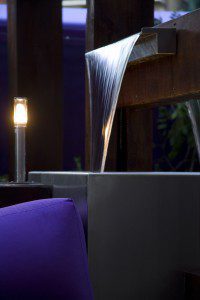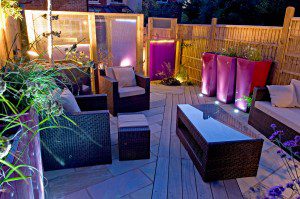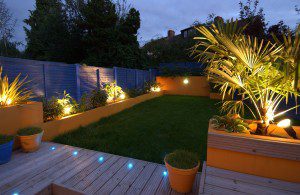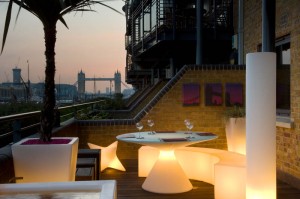How to install lighting in the garden.

Lighting in the garden – always a necessity but something that gives most people a shudder. A good garden lighting scheme can complete your garden design. Not only will illumination enable you to continue to use your garden when the sun goes down, it will create atmosphere and accentuate key features that can completely transform the space into something magical. The important thing to remember when planning lighting in the garden is that less is more. Your aim here is to create ambiance, not to turn your garden into an airport runway. A few well placed lights can have a much greater impact than a peppering of fittings placed at random through the space.

There are four main categories of lighting style to consider when developing your design: accent, functional, safety/security and water. Each of these can be achieved with a variety of different types of fitting, and the categories are not mutually exclusive. A line of deck lights installed along the edge of a decking platform can be decorative, providing accent, and by defining its edge also have a safety element in preventing trips and falls.
When planning your garden lighting design, consider how you wish to use different parts of your garden. You will need fairly bright, functional lighting around seating and dining areas, preferably something that can be wall or post mounted with an adjustable head. Uplighting trees and shrubs will give instant impact to a garden, as will uplighting sculptures or feature walls, while low-watt, low voltage spotlights placed evenly through planting beds can create a soft and gentle glow across the space. A submersible pond light can create a relaxing rippled effect and animate the space in a way that the static light from other fittings cannot. Steps, raised bed walls and platform edges are good places to install eye-lid, which will provide framing to a space without glare.
There are several good garden lighting suppliers on-line, some of whom also offer a design service. If you decide to develop your own lighting scheme, it is worth taking advice about wattage, positioning and suitability of the fitting. Electrical fittings have a two-number Ingress Protection (IP) rating, both numbers ranging from 0 – 9. The first number determines its level of protection from dust and debris, the second shows its protection from water. The higher the number the better the protection it offers. A quick search online will find a host of sites that offer a table that lists the various levels of protection for each IP number. Generally, a fitting intended for use in a garden should be at least IP44 rated, ideally IP55 or above. Fittings that are designed to be buried in the ground (such as driveway lights) or submersed (pond lights) should be over IP67.
An important note about safety:
While there is nothing to stop you from designing your lighting scheme, choosing the fittings and buying the materials, it is imperative that the installation is carried out by a qualified professional. Electricity is a potentially lethal resource and its use in an outdoor setting can be especially problematic due to the exposed and often wet nature of the location. As with bathrooms and kitchens where water is frequently present, there are particular rules governing the type of fittings and materials that can be used in a garden and an exterior electrical installation will require additional protection to ensure that it remains safe even if a problem occurs.
Building Regulations in England and Wales require that all exterior electrical installations are notified to the local authority. The National Inspection Council for Electrical Installation Contracting (NICEIC) is an independent voluntary body which regulates its members, ensuring that they are competent professionals whose work adheres to current safety and technical standards. Registered members are able to self-certify their work and issue a Part P Certificate of Minor Electrical Works, which is recognised by local building control authorities and takes the responsibility of notification away from the person commissioning the work. A Part P certificate is your guarantee that the work has been carried out to a specific standard by a registered professional. Although the regulations do not prevent you from actually carrying out the installation yourself (although this is not recommended), to remain within the law it must at the very least be checked and certified by an NICEIC qualified electrician, or notified by you to the local building authority so they can check the installation themselves. Unless you are confident that you know what you are doing, it is always best to leave it to the professionals to avoid the necessity of costly remedial work to render the installation safe and legal. Even if there is an existing installation that was carried out by a suitable electrician, do not be tempted to make DIY changes and additions – not only will you be putting the garden users at risk and exposing yourself to potential prosecution should the unthinkable happen, you will also invalidate the Part P certificate and could cause you problems if you decide to sell the property.
It is worth noting when choosing an electrician to install and/or certify your lighting scheme, that not all electricians have the required training and qualifications to issue Part P certificates. Always check their credentials before commissioning the work and if in doubt contact NICEIC for further information. The NICEIC website www.niceic.com has a searchable database of all registered electricians, grouped by geographical location, which should make it relatively easy to find a suitable sparks.



